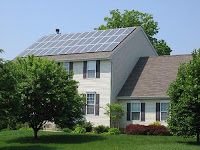 The only question that is really relevant to solar energy is why the heck aren’t we using it more? Sunlight is free and there is a lot of it to be had. These days technology has made converting the suns ray into use-able energy easier and more powerful than ever. Back in the day it was kind of hard to take your house off the grid with solar but these days it’s a piece of cake, and it’s free! The problem is education on the topic. People are afraid of change and it takes a leap of faith to break the ties to fossil fuel.
The only question that is really relevant to solar energy is why the heck aren’t we using it more? Sunlight is free and there is a lot of it to be had. These days technology has made converting the suns ray into use-able energy easier and more powerful than ever. Back in the day it was kind of hard to take your house off the grid with solar but these days it’s a piece of cake, and it’s free! The problem is education on the topic. People are afraid of change and it takes a leap of faith to break the ties to fossil fuel.Let’s define the cheap in solar energy first. What is meant that it is free is that after you have installed all the necessary equipment like solar panels, batteries and a generator there is no cost for harnessing the Sun’s power. The initial cost of the equipment can be saved in little more than a year in electric and hot water bills, sometimes even faster. And, even the cost of the equipment isn’t that bad anymore. With more and more people going solar the cost of equipment has come down thanks to demand as well as the technological advancements over the past decades.
Add to the low cost of adapting solar that it no longer takes as much space up and you have a real no brainer. In just a couple decades solar panels and batteries have shrunk significantly in size meaning you need less space to host a solar energy system. The batteries have gotten so advanced that you can go quite a while without sunlight and still operate at full power. It used to be your power was cut down even if a few clouds came by. Not anymore, you can pretty much bank on having plenty of power at anytime.
The arguments for solar power are all good ones and there is little reason not to take the leap. Times are tough right now and if you can take away your dependence on fossil fuel based power generation then you will save a bundle. And, of course since the Sun is very clean source of energy the effect on the environment is zero. Saving money and reducing your carbon footprint while enjoying every convenience you have come to enjoy is a great concept. Installing the equipment and using solar energy is just smart.




